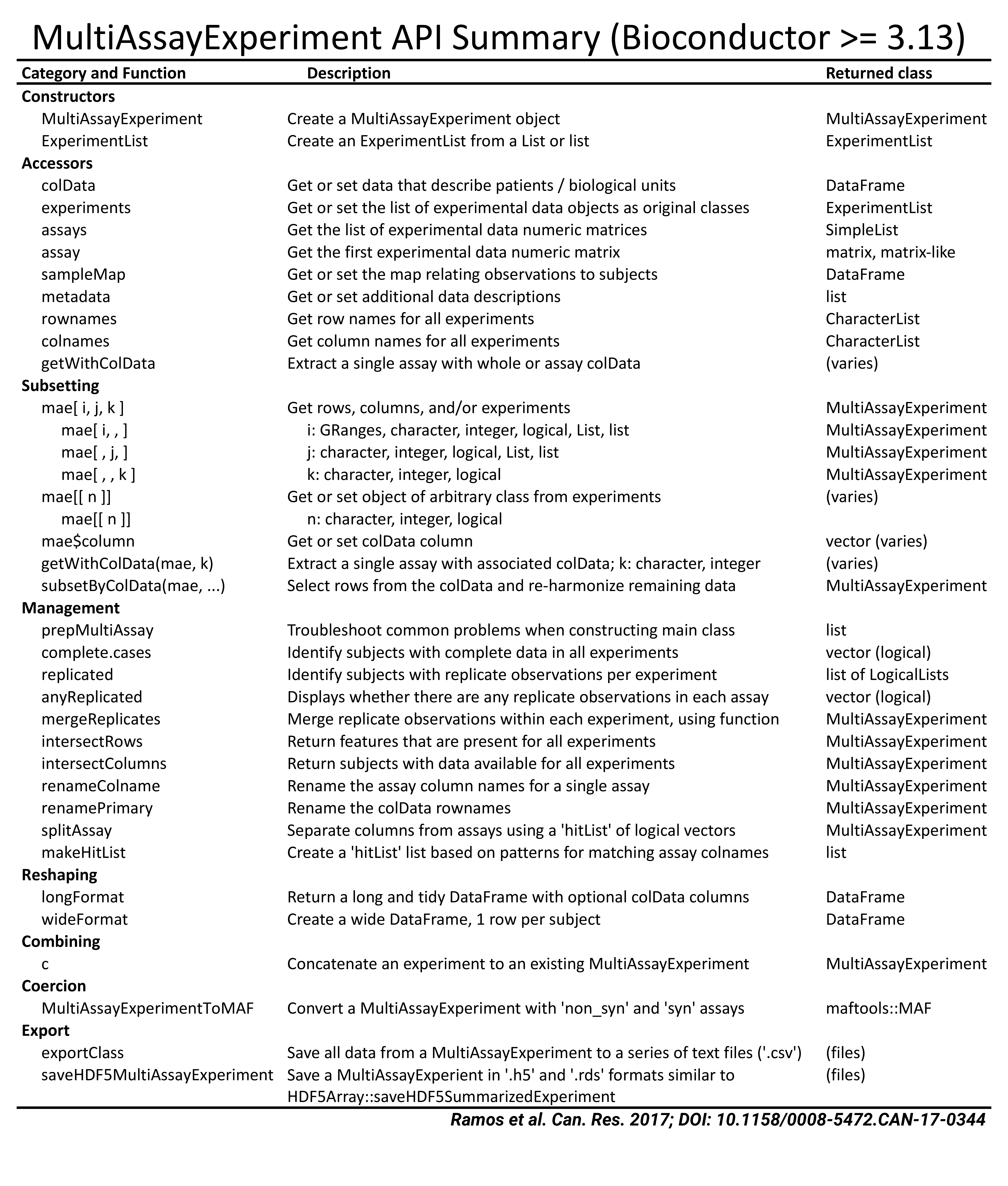Software For The Integration Of Multi-Omics Experiments In Bioconductor
Installation
We recommend installing the stable release version of MultiAssayExperiment in Bioconductor. This can be done using BiocManager:
if (!require("BiocManager"))
install.packages("BiocManager")
library(BiocManager)
install("MultiAssayExperiment")Schematic
Here is a visual overview of the MultiAssayExperiment class. The three main components are:
-
colData- phenotype data -
ExperimentList- a list of tables from experimental results -
sampleMap- a graph representation of ‘samples’ and ‘participants’
Note. For simplicity, we use the terms ‘samples’ and ‘participants’ to elucidate the relationship although MultiAssayExperiment can work on other biological specimens.

Ready-to-use MultiAssayExperiment objects
For easy-to-use and ready-made MultiAssayExperiment objects, use the curatedTCGAData experiment data package.
install("curatedTCGAData")Companion package for working with TCGA data
TCGAutils is a handy package for working with MultiAssayExperiment data objects from curatedTCGAData. It is highly recommended to use TCGAutils for identifier manipulation, sample identification and more.
install("TCGAutils")Documentation
The MultiAssayExperiment API is available by browsing to the API wiki.
The MultiAssayExperiment Bioconductor Special Interest Group
This group meets remotely to discuss this project approximately every 3 weeks. If you are interested, please join the MultiAssayExperiment Google Group and see the calendar of upcoming meetings.
Contributor Code of Conduct
As contributors and maintainers of this project, we pledge to respect all people who contribute through reporting issues, posting feature requests, updating documentation, submitting pull requests or patches, and other activities.
We are committed to making participation in this project a harassment-free experience for everyone, regardless of level of experience, gender, gender identity and expression, sexual orientation, disability, personal appearance, body size, race, age, or religion.
Examples of unacceptable behavior by participants include the use of sexual language or imagery, derogatory comments or personal attacks, trolling, public or private harassment, insults, or other disrespectful conduct.
Project maintainers have the right and responsibility to remove, edit, or reject comments, commits, code, wiki edits, issues, and other contributions that are not aligned to this Code of Conduct. Project maintainers who do not follow the Code of Conduct may be removed from the project team.
Instances of abusive, harassing, or otherwise unacceptable behavior may be reported by opening an issue or contacting one or more of the project maintainers.
This Code of Conduct is adapted from the Contributor Covenant, version 1.0.0, available at http://contributor-covenant.org/version/1/0/0/

